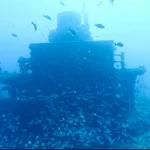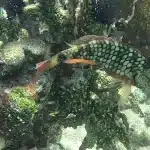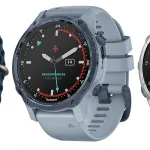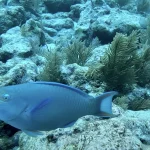Best Times to Spot Key West Sea Turtles
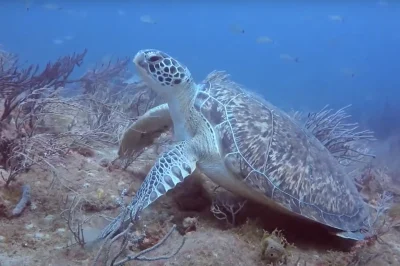
Table of Contents
- Best Times to Spot Key West Sea Turtles
- Top Key West Diving Spots for Turtle Encounters
- Avoid These Mistakes: Ensuring Successful Turtle Sightings
- Debunking Myths: Sea Turtles in the Keys
- Predicting Future Turtle Trends in the Keys
- Comparing Turtle Behaviors Across Florida’s Dive Spots
- Key West Diving Gear: Maximizing Your Turtle Viewing Experience
- The Science of Sea Turtle Conservation in Key West
Introduction
Diving in Key West offers an unparalleled opportunity to witness the graceful sea turtles in their natural habitat. This guide will help scuba diving enthusiasts plan their dives to maximise turtle sightings. By understanding the best times, locations, and behaviours associated with sea turtles in Key West, you can enhance your diving experience and make unforgettable memories.
Best Times to Spot Key West Sea Turtles
Key West Dive Sites for Turtle Encounters
When diving in Key West, enthusiasts can experience thrilling encounters with sea turtles at several remarkable sites. Here are the top dive locations that guarantee these encounters:
Dry Tortugas National Park
Located 70 miles west of Key West, Dry Tortugas National Park is a renowned marine sanctuary famed for its crystal-clear waters and active nesting sites for hawksbill, green, and loggerhead sea turtles. Accessing this remote park typically requires a ferry or private boat, making it a full-day adventure. The waters here are rich in marine life, providing spectacular sightings of turtles alongside divers in their natural habitat.
Eastern Dry Rocks
Known for its vibrant coral ledges and swim-throughs, Eastern Dry Rocks is a part of often-explored reef sites, making it an ideal diving spot where divers can encounter turtles and even nurse sharks. Often included in guided tours, such as Fury’s Double Dip Snorkel, this location offers a stunning underwater ecosystem accentuated by myriad sea creatures.
Rock Key
With its shallow waters, Rock Key is fantastic for beginner divers. This area is teeming with marine life, including sea turtles that are frequently spotted gliding in the reef’s diverse surroundings. Many tours, such as those offered by Sunset Watersports, visit this vibrant dive site.
Sand Key Lighthouse
Sand Key Lighthouse provides clear waters with an exceptionally vibrant coral reef, enhancing the likelihood of spotting turtles swimming among various tropical fish. The protective nature of this area allows for a sanctuary-like dive experience.
Vandenberg Wreck
The Vandenberg Wreck, an artificial reef formed by a sunken ship, is a spectacular dive site that hosts larger species like groupers and snappers. Due to its rich biodiversity, this site also provides opportunities for encountering turtles, making it a favorite among experienced divers seeking deeper adventures.
Glass Bottom Boat Tours
For those preferring not to dive, the Glass Bottom Boat Tours by Fury offer an excellent alternative. This experience allows guests to observe loggerhead turtles swimming near the reef without needing diving gear, making it accessible for everyone.
Prioritise visiting Dry Tortugas and Eastern Dry Rocks for the best chances of experiencing sea turtles in their natural environments. Always adhere to local regulations to protect these magnificent creatures.
Top Key West Diving Spots for Turtle Encounters
Diving in the crystal-clear waters of Key West offers an unparalleled opportunity to witness the majestic sea turtles in their natural habitat. However, many divers unknowingly make common mistakes that can significantly reduce their chances of encountering these fascinating creatures. Being aware of these pitfalls can enhance both the diving experience and the wellbeing of the turtles.
Avoid These Mistakes: Ensuring Successful Turtle Sightings
1. Approaching Too Closely or Touching
Divers often feel compelled to get up close and personal with sea turtles, whether for photographs or interaction. However, approaching too closely can stress the animals or alter their natural behaviours. Even unintentional disturbances, such as causing a turtle to change its swimming direction, are considered harassment under the law. It’s essential to maintain a respectful distance to avoid disrupting their natural habitat.
2. Using Inappropriate Lighting
- Underwater Lights: Bright white lights can disorient turtles, affecting their navigation and behavior. This is particularly crucial since turtles are sensitive to light shifts in their environment.
- Beach and Boat Lighting: Artificial lights can confuse hatchlings during nesting season (April to October), leading them to swim in the wrong direction instead of towards the ocean.
3. Disregarding Nesting Areas
Divers may unintentionally disturb nesting sites by swimming too close or interacting with areas where turtles lay eggs. Protecting these habitats is critical, as disturbances can lead to failed nesting attempts, known as false crawls, which indicate stress on the turtles and their environment.
4. Touching or Riding Turtles
Physical interactions with sea turtles are not only harmful but also illegal. Touching or attempting to ride these majestic creatures can damage their skin and disrupt their ability to swim properly.
5. Ignoring Wildlife Reporting Protocols
Injured or disoriented turtles require immediate attention. Not reporting these incidents denies them the critical care they need. Divers can contact local wildlife authorities, such as the Florida Fish & Wildlife Conservation Commission, to report any concerns.
Incorporating proper practices, such as maintaining a distance of at least six feet from turtles and using red or amber lights to avoid disturbing nesting areas, can greatly enhance the experience for divers and help protect these vulnerable species.
Debunking Myths: Sea Turtles in the Keys
Common Myths About Sea Turtles in Key West
When it comes to sea turtles in the Keys, several myths persist among divers and the general public. Understanding these misconceptions is crucial for appreciating these extraordinary creatures and for responsible diving practices in their habitats.
Myth #1: All Sea Turtles Are Herbivores
This is false. While the green sea turtle predominantly consumes seagrass and algae, not all sea turtles share this dietary preference. Other species, such as loggerhead turtles, have a varied diet that includes crustaceans, jellyfish, and other marine organisms. The idea that all sea turtles are herbivores misrepresents their ecological roles and feeding behaviours, which are vital in maintaining the health of marine ecosystems. Recognising this diversity is essential for divers to appreciate the specific species they may encounter.
Myth #2: Sea Turtles Easily Distinguish Food from Trash
Another widespread myth is that sea turtles can easily differentiate between their natural food and plastic waste. This claim is false and highlights the significant threat that ocean pollution poses to these reptiles. Turtles often mistake plastic bags for jellyfish, one of their preferred food sources, leading to ingestion that can cause severe health issues and even death. This misconception underscores the need for divers to be mindful of ocean litter and to engage in conservation efforts.
Myth #3: Shelling Hawksbill Turtles Is No Longer a Threat
While recent protections have been implemented, the myth that hawksbill turtles are completely safe is partially true. The Endangered Species Act of 1973 significantly curtailed commercial harvesting of their shells, which were once highly prized. However, historical exploitation nearly drove these turtles to extinction, and conservation efforts are still vital to ensure their survival in the wild today. Divers should be aware of the conservation status and the importance of protecting these species from further threats.
Predicting Future Turtle Trends in the Keys
Predicting future trends for sea turtle populations in the Florida Keys involves understanding the intricate relationship between climate change, conservation efforts, and the specific responses of different turtle species. The environmental changes underway, particularly those affecting nesting and foraging habitats, are significant.
Climate Change Impacts
Climate change poses substantial threats to sea turtles, especially through habitat loss and altered nesting conditions. Rising sea levels, driven by climate change, threaten critical nesting beaches. Additionally, increasing temperatures can influence sand incubation conditions, potentially skewing sex ratios and affecting hatchling success rates. Localised climate patterns in areas like Key West could exacerbate these issues.
Conservation Successes and Challenges
Efforts to protect sea turtle populations have produced remarkable successes, particularly for Florida’s green turtles, which have seen nest counts increase a staggering 80-fold since 1989 due to protections under the Endangered Species Act (ESA). In contrast, Kemp’s ridley populations continue to decline, revealing the vulnerabilities that different species face. Key West exemplifies these challenges and successes:
- Recovery Efforts: Overfishing previously diminished green turtle populations, but protections have facilitated significant recovery in the region.
- Protected Habitats: The establishment of the Key West National Wildlife Refuge supports essential habitats for various life stages of sea turtles, contributing to their successful breeding and foraging.
Species-Specific Adaptability
Different sea turtle species exhibit varying adaptability to ongoing climate changes. Loggerhead turtles may find refuge in the Florida Keys, potentially thriving as conditions shift. Conversely, green turtles might adapt better to the slightly warmer waters along the southeastern coast of Florida. Unfortunately, other species face a dual reality: while some may expand into newly suitable areas, others could face extirpation risks due to habitat loss and increasing environmental stressors.
Future Projections
The future of turtle populations in Key West will depend on proactive management of climate impacts and conservation efforts:
- Optimistic Scenario: Continued enforcement of the ESA could sustain recovery efforts and bolster populations.
- Worst-Case Scenario: A decline in compliance with conservation laws might reverse these gains, leading to increases in habitat loss and species decline.
Research underscores that although targeted conservation can alleviate some climate stresses, the long-term outcomes will depend heavily on ongoing protective measures and adaptive management strategies.
Comparing Turtle Behaviors Across Florida’s Dive Spots
Sea Turtle Behaviours in Florida Dive Sites: Regional Comparisons
Florida’s coastal waters host a rich diversity of sea turtle species, each exhibiting unique behaviours influenced by their habitat and human interactions. Understanding these variations is critical for scuba divers aiming to engage meaningfully with these incredible marine animals.
Species Composition
Different regions in Florida provide access to various sea turtle species:
- Palm Beach County (Atlantic): This area is renowned for its diversity, supporting all five species of Atlantic sea turtles, which include loggerhead, green, Kemp’s ridley, leatherback, and hawksbill turtles.
- Northern Gulf of Mexico: Dominated by loggerhead, green, and Kemp’s ridley turtles, this region emphasizes artificial reefs and sand habitats as critical areas for feeding and nesting.
Habitat Utilisation
Sea turtles favour specific habitats for feeding and resting:
- Coral Reefs (Atlantic): The vibrant reefs of Palm Beach attract turtles, although their surface resting behaviours can make them susceptible to boat traffic.
- Artificial Reefs/Jetties (Gulf): In the Gulf, Kemp’s ridley and loggerhead turtles utilise artificial reefs, while green turtles display heightened wariness and larger safe approach distances.
Human Interaction and Behavioural Responses
Human interactions significantly impact sea turtle behaviours:
- Minimum Approach Distance (MAD): Studies show that larger turtles exhibit greater starting distances in response to potential threats. Example behaviours include:
| Species | MAD to Startle Response |
|---|---|
| Green Turtle | Larger range |
| Loggerhead | Moderate wariness |
| Kemp’s Ridley | Closer approach tolerance |
These behavioural traits highlight the varying degrees of wariness among species, influencing their dive patterns and interaction with divers.
Feeding and Diving Patterns
- Surface Resting: A critical vulnerability, especially in heavily trafficked boating channels, observed predominantly in regions like Palm Beach.
- Dive Profiles: In the Gulf, turtles exhibit specific diving behaviours that adjust according to environmental factors, highlighting their adaptability.
While direct data on Key West’s sea turtle behaviours remains limited, its proximity to Gulf habitats allows for the inference that similar behavioural patterns may exist, potentially sharing characteristics with Palm Beach’s diverse species interactions.
Key West Diving Gear: Maximising Your Turtle Viewing Experience
Essential Gear for Turtle Viewing
To maximise your experience while diving in Key West and encountering the region’s stunning sea turtles, equipping yourself with the right scuba gear is essential. The warm waters, ranging between 78°F and 84°F, call for both effectiveness and comfort, ensuring that your turtle-viewing adventure is not only enjoyable but also safe.
- Snorkel Gear (Mask, Snorkel, and Fins)
- Cressi Snorkel Gear: Recognised for its clarity and comfort, this gear is perfect for surface observation, allowing you to closely watch sea turtles without disturbing their environment.
- Mares Wetsuits: Highly recommended for their durability and fit, they provide necessary protection against sunburn and minor cuts from marine life while diving.
- Full-Face Mask (Optional for Deeper Dives)
A full-face mask, such as those from Ocean Reef, provides comfortable breathing and enhances underwater communication. This is particularly useful when diving deeper since it allows for quieter approaches to turtles. - Compact Dive Lights
Essential for exploring deeper wrecks or shadowed reef areas, a portable dive light can significantly improve visibility, helping you spot turtles hiding in less illuminated spots.
Top Dive Shops in Key West
| Dive Shop | Specialties | Why Choose? |
|---|---|---|
| Divers Direct | Cressi snorkels, Mares wetsuits, EVO computers | Wide selection and competitive pricing make it a go-to for gear needs. |
| Capt. Hook’s Dive Gear | Scuba Pro, Cressi, Sherwood | Ranked high in gear quality with sanitised rental equipment for your peace of mind. |
When renting gear, particularly from Capt. Hook’s, you can ensure you’ll receive fresh, thoroughly maintained equipment. If you’re looking for guided tours, consider Sunset Watersports, which offers sanitised gear along with guided reef trips focused on turtle sightings.
The Science of Sea Turtle Conservation in Key West
Sea Turtle Species in Key West
Florida’s waters host five of the seven global sea turtle species: loggerhead, green, hawksbill, Kemp’s ridley, and leatherback. Each species faces various threats, resulting in different conservation statuses under the U.S. Endangered Species Act (ESA):
- Leatherback: Vulnerable
- Green: Endangered
- Hawksbill: Critically endangered
- Loggerhead: Vulnerable
- Kemp’s ridley: Critically endangered
Conservation Threats
Key threats to sea turtles include:
- Vessel strikes: This is the leading cause of injuries requiring rehabilitation.
- Marine debris: Turtles often become entangled in fishing gear or ingest plastic, leading to serious health issues.
- Human exploitation: While direct harvesting for meat or shells is now illegal under ESA protections, past practices have severely impacted populations.
Conservation Efforts
Rehabilitation and Research
The Key West Aquarium plays a pivotal role in local conservation. It houses four non-releasable turtles as educational ambassadors, many of which have injuries from vessel collisions or entanglements. The aquarium partners with The Turtle Hospital in Marathon for rehabilitation efforts and emphasizes scientific monitoring that focuses on tracking the survival rates and habitat use of rehabilitated turtles, particularly in protected areas like Dry Tortugas National Park, which serves as a critical nesting site.
Legal and Policy Frameworks
Under the ESA, there are strict protections in place that prohibit the harassment, injury, or killing of listed sea turtle species. Habitat preservation is crucial, and nesting sites—such as Smathers Beach and Long Key State Park—are actively monitored during breeding seasons, typically occurring in spring and summer.
Public Engagement
The aquarium’s Sea Turtle Conservation Tour promotes education on waste reduction, responsible boating, and the avoidance of single-use plastics. Local initiatives, including SAVE-A-TURTLE, encourage community involvement through citizen science projects and beach cleanups, fostering a sense of responsibility toward these vulnerable species.
Nesting Season and Viewing
Nesting occurs annually at beaches like Bahia Honda State Park and Sombrero Beach in Marathon. Scuba diving adventures near the Florida Reef Tract or in the Dry Tortugas offer excellent opportunities to observe these magnificent turtles in their natural habitat during their nesting and foraging periods.
Best Time to See Sea Turtles While Diving in Key West
The optimal time to dive in Key West for the best chance of spotting sea turtles is from July to October. During this period, water temperatures soar to around 85–86°F, creating ideal conditions for diving and snorkelling. This timeframe overlaps with the nesting and hatching season for sea turtles along the Gulf and Atlantic coasts. Specifically, nesting occurs from May to October on the Gulf side and from March to October on the Atlantic side, dramatically increasing turtle activity in the waters near Key West.
July and August offer the warmest water and enhanced marine biodiversity. However, September and October present a quieter environment, where an influx of baitfish may attract larger marine species, providing an exciting diving experience.
Best Places to Dive for Turtle Sightings
- Dry Tortugas National Park
- Located 70 miles west of Key West, this remote site is one of Florida’s most significant turtle nesting areas.
- Snorkelers frequently encounter green turtles and hawksbills in its pristine waters.
- Highlights include clear water for snorkelling and prime nesting activity.
- Smathers Beach
- This popular public beach is known for occasional turtle nesting.
- Scuba divers can monitor the beach during summer for hatchlings emerging from the dunes, but be vigilant not to disturb protected nesting areas.
- Key West Reefs
- Dive sites along both Atlantic and Gulf coasts show increased turtle activity correlating with nesting periods.
- Keep an eye out for other marine life, including lemon sharks and blacktip sharks.
Pro Tip: Consider booking tours with operators experienced in local turtle habitats to minimise your impact and increase your chances of sightings.
Sources
- Sunset Watersports – Snorkeling with Giant Sea Turtle in Key West
- Fury Water Adventures – Sea Turtles
- Lost Reef Adventures – Meet the Marine Life
- ScubaBoard – Best Dolphin, Manatee, and Turtle Encounter Snorkeling
- Key West Sand Bar Tour – Discover Key West Turtles
- Florida Fish and Wildlife Conservation Commission – Sea Turtle FAQs
- Visit Florida – Sea Turtle Tips
- NOAA Fisheries – Tremendous Turtle Facts

